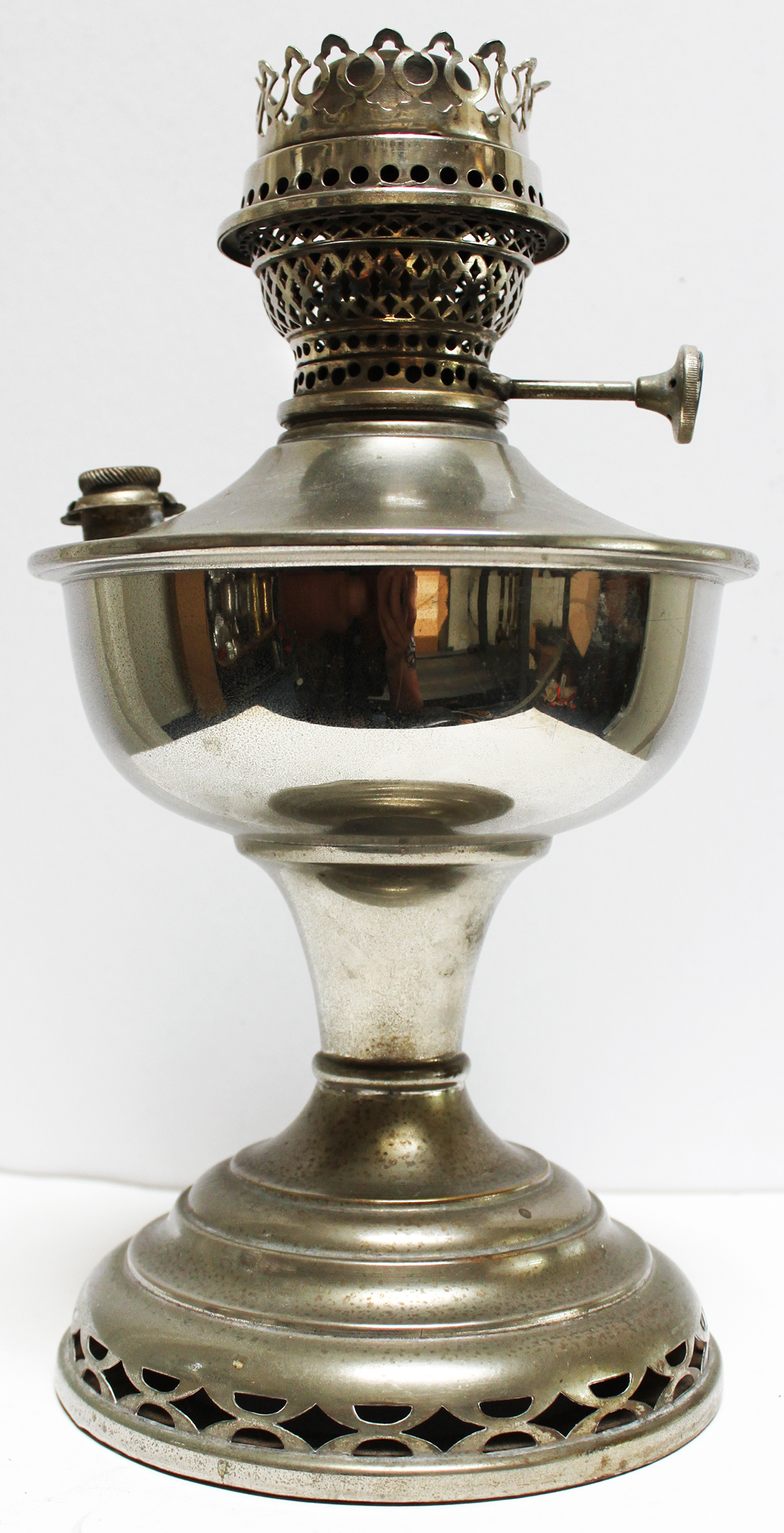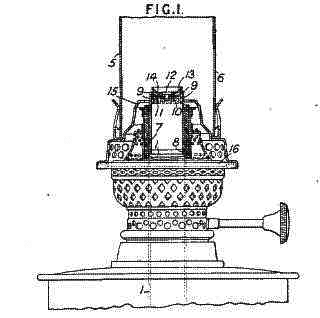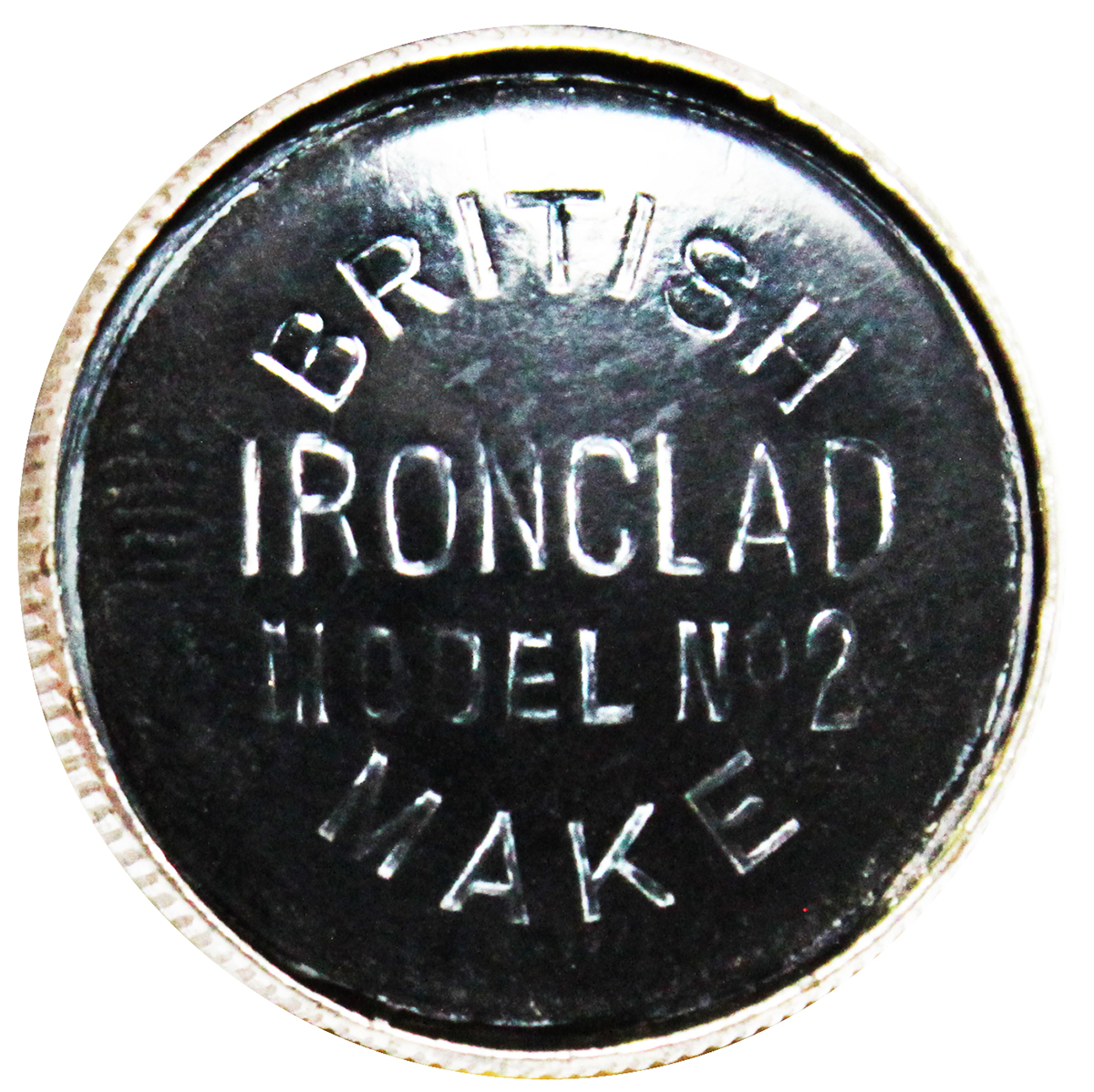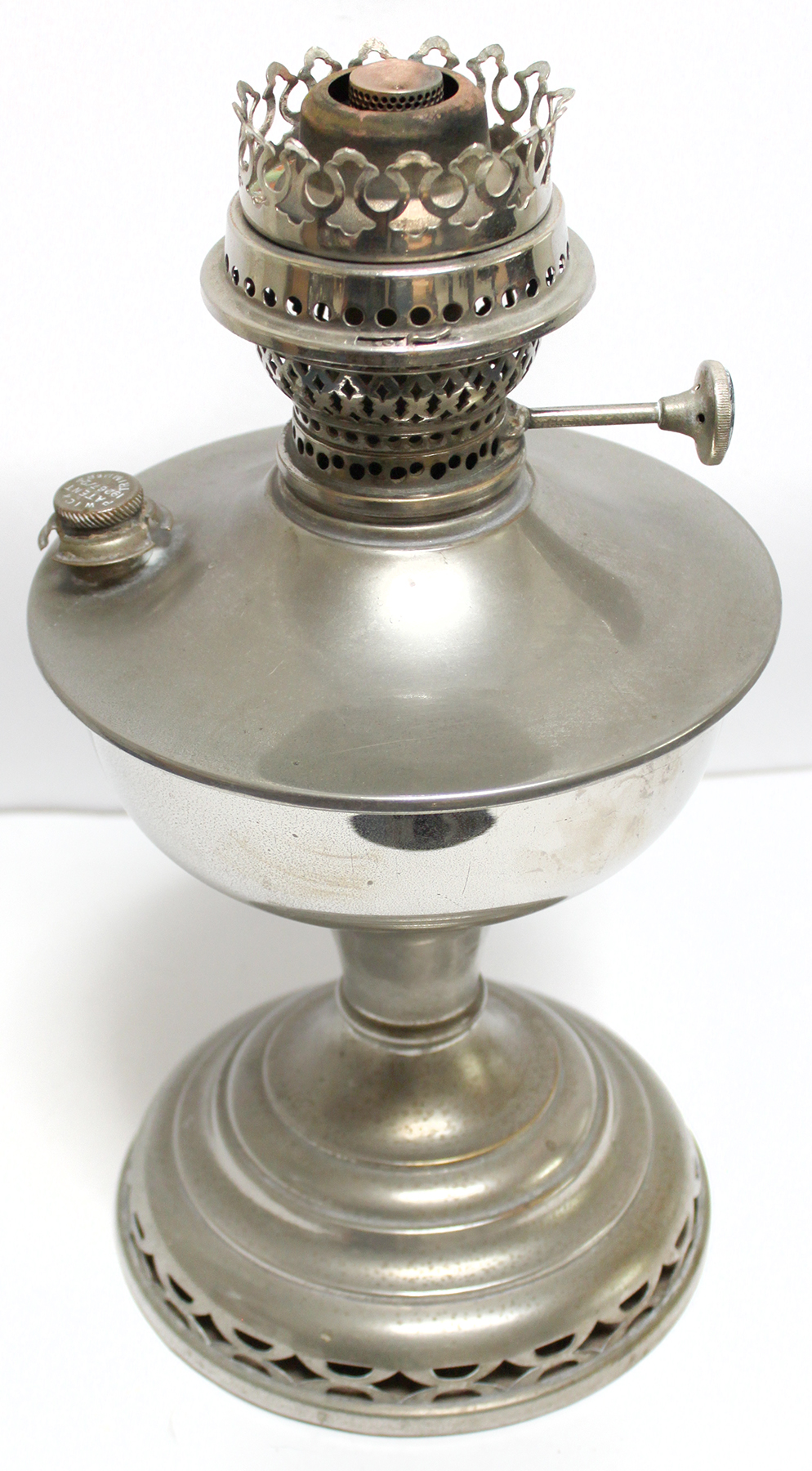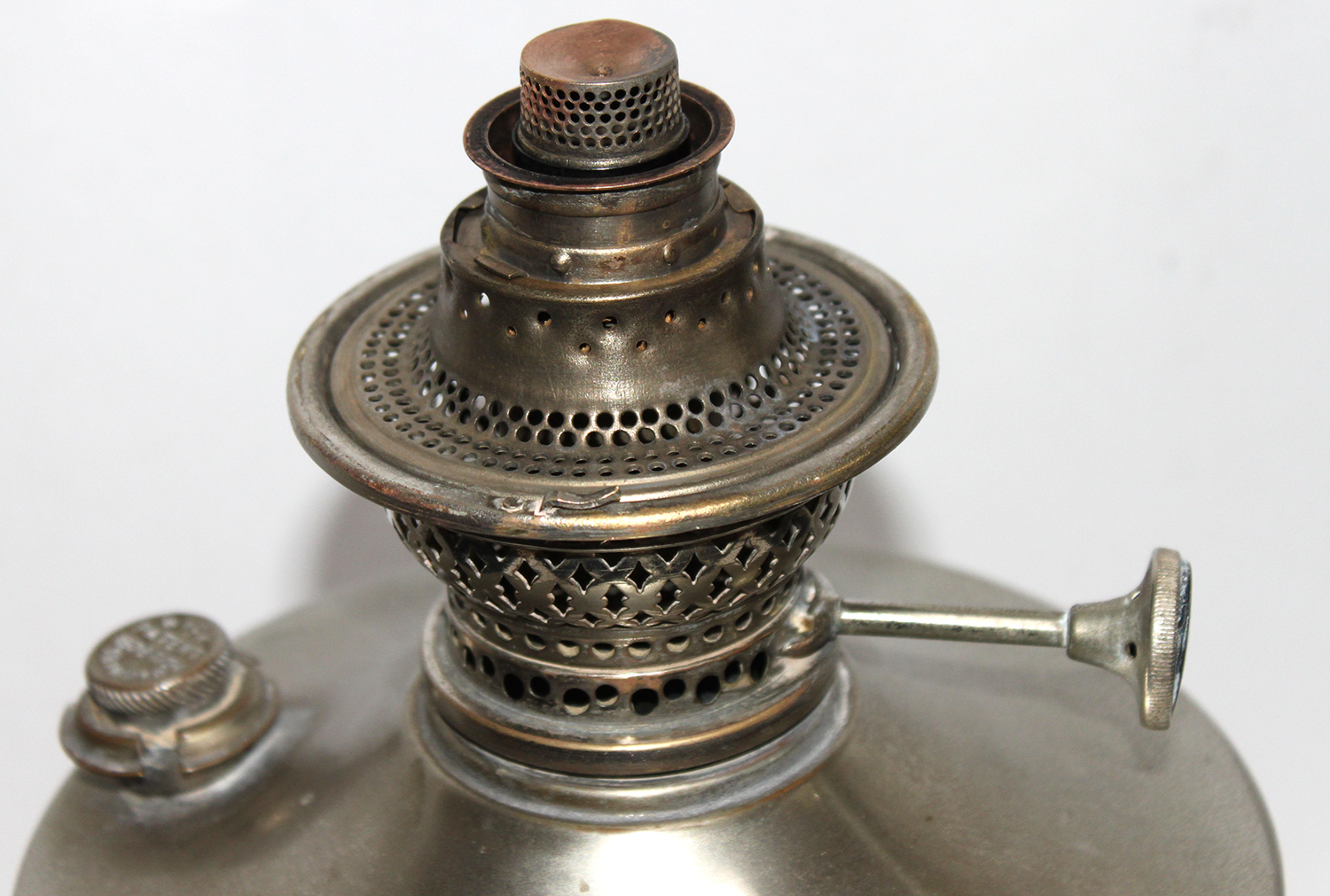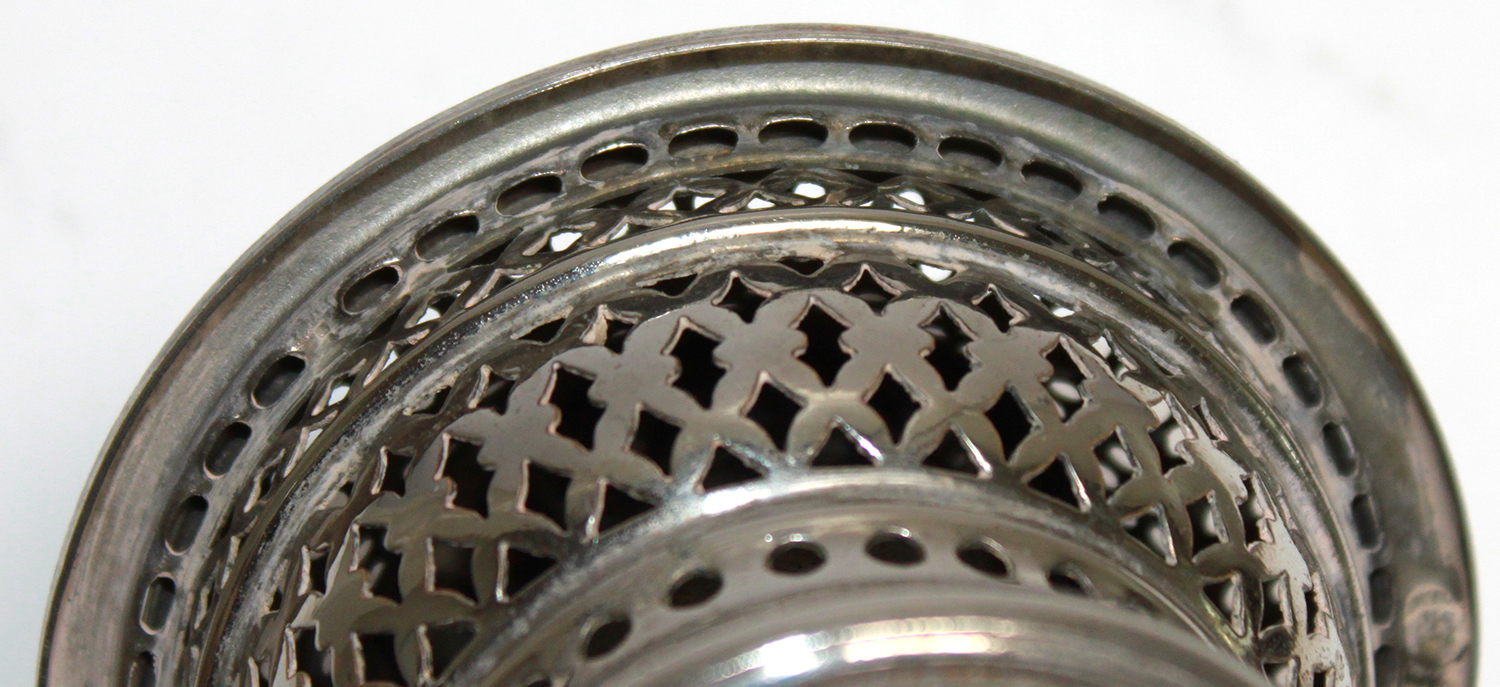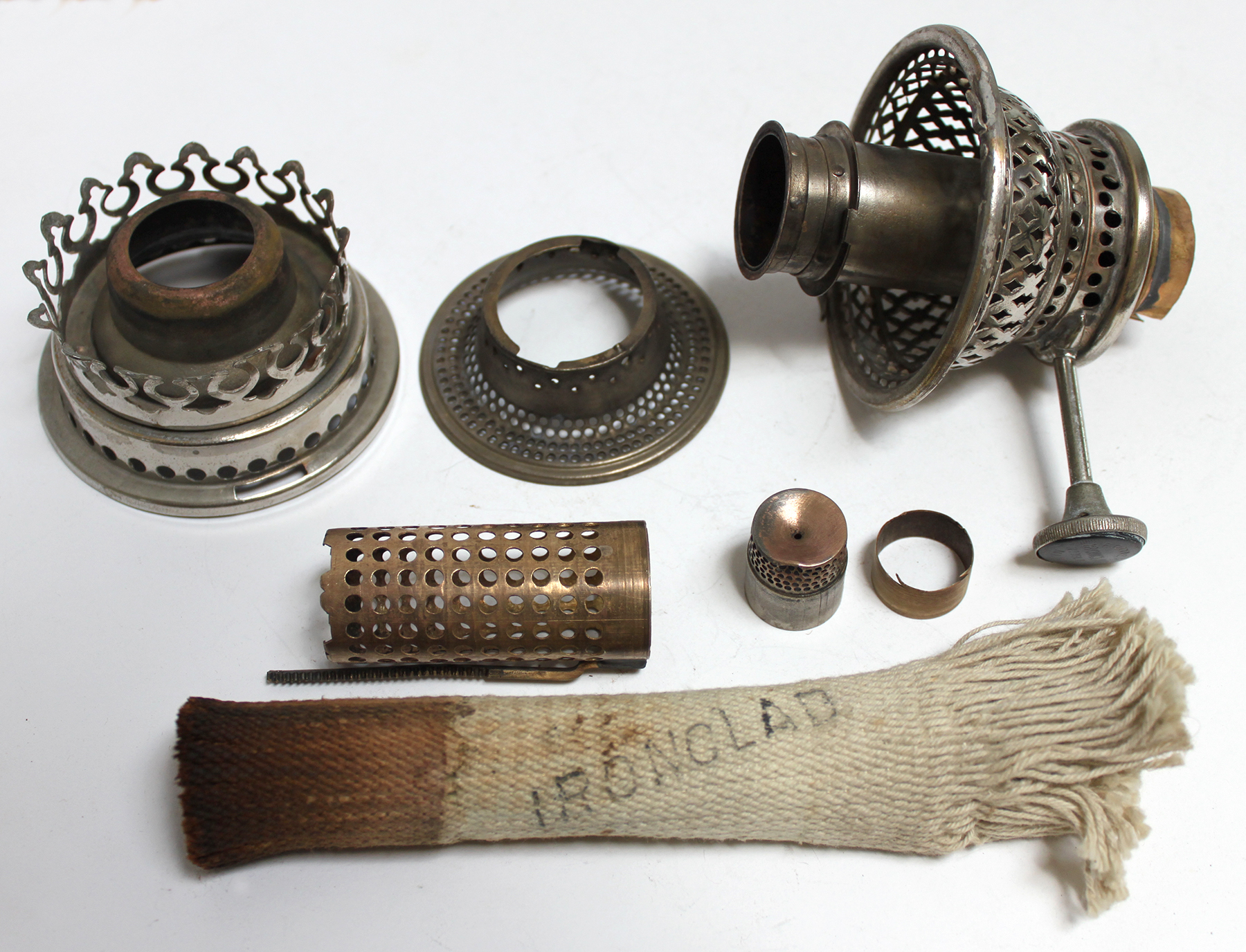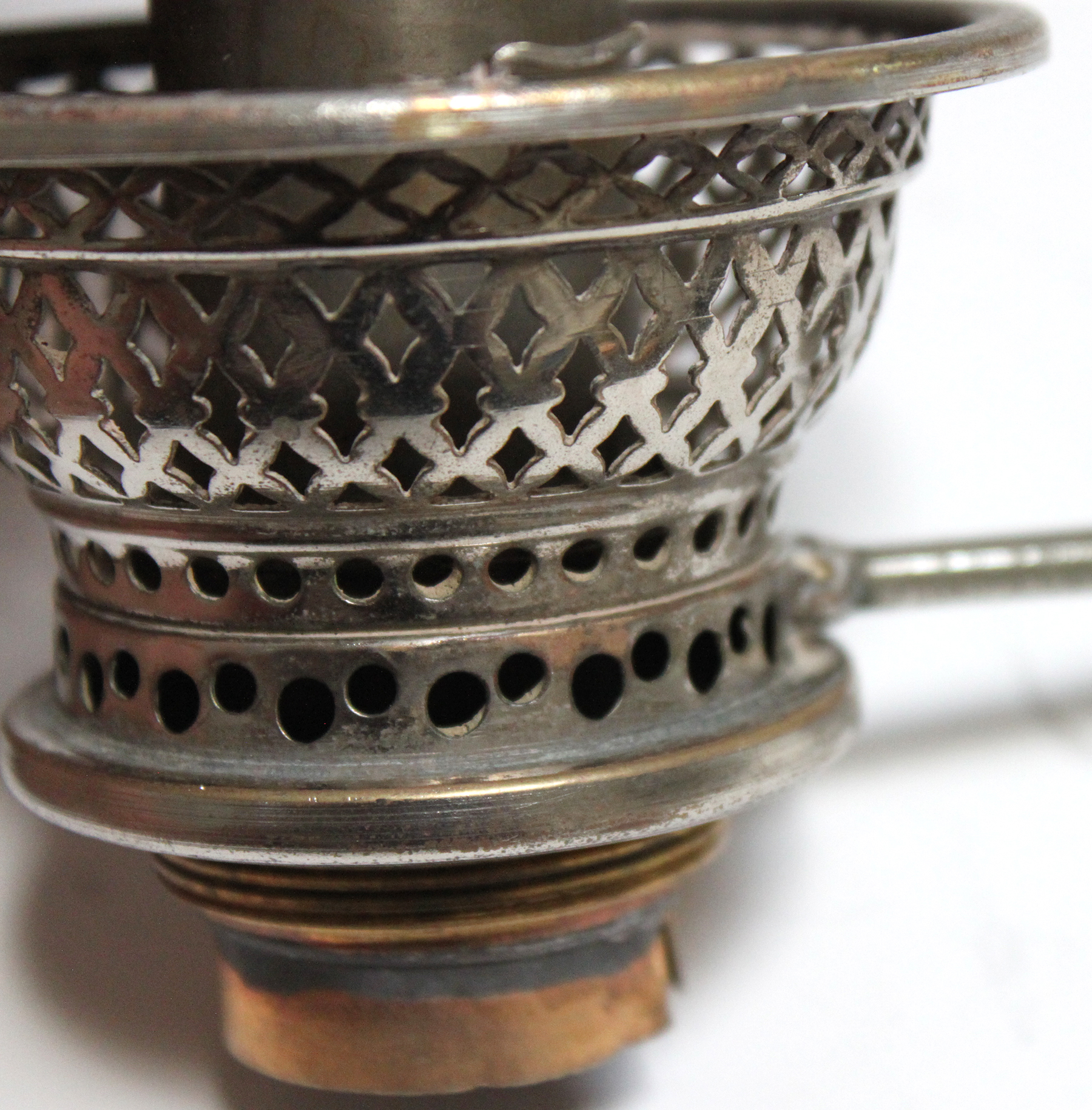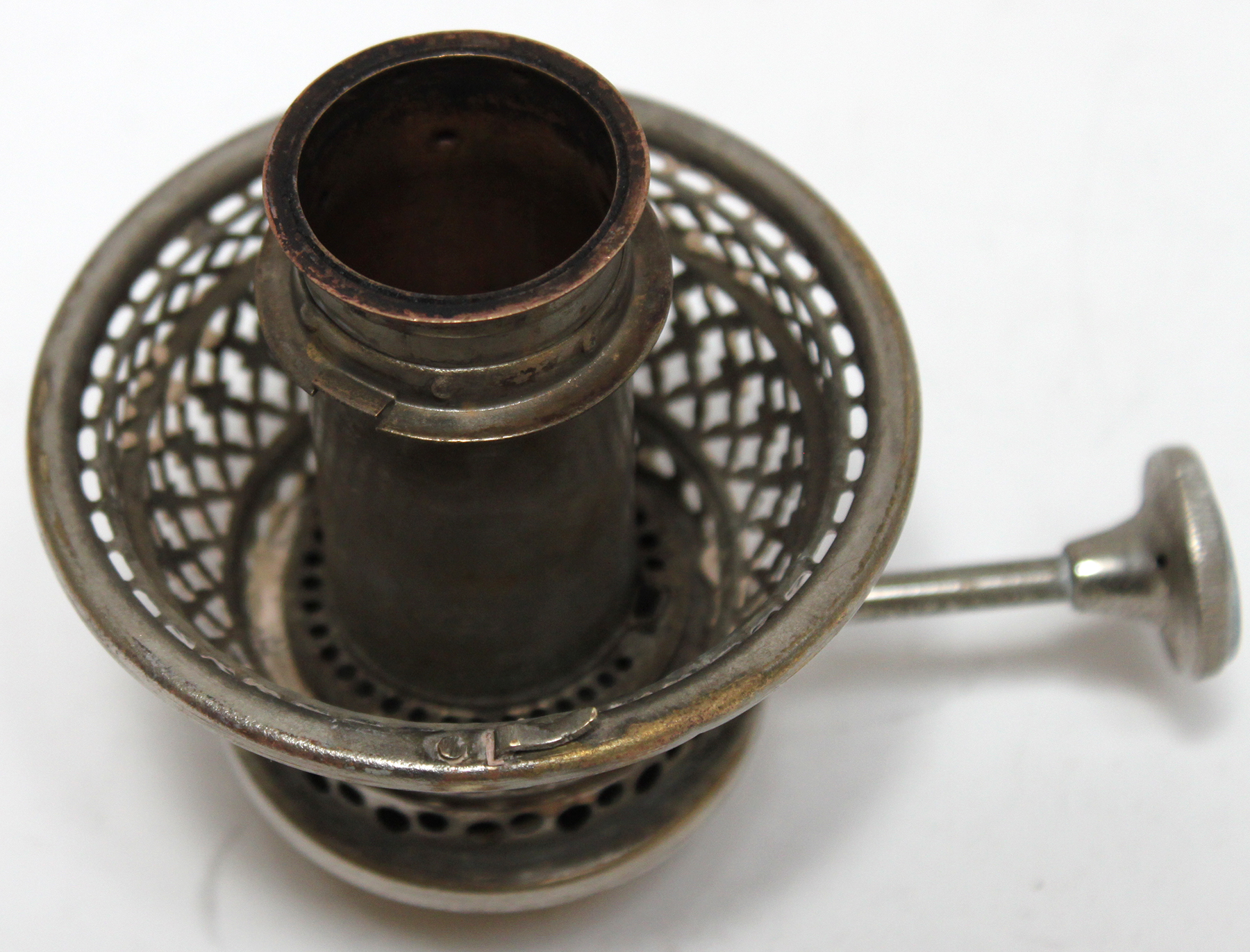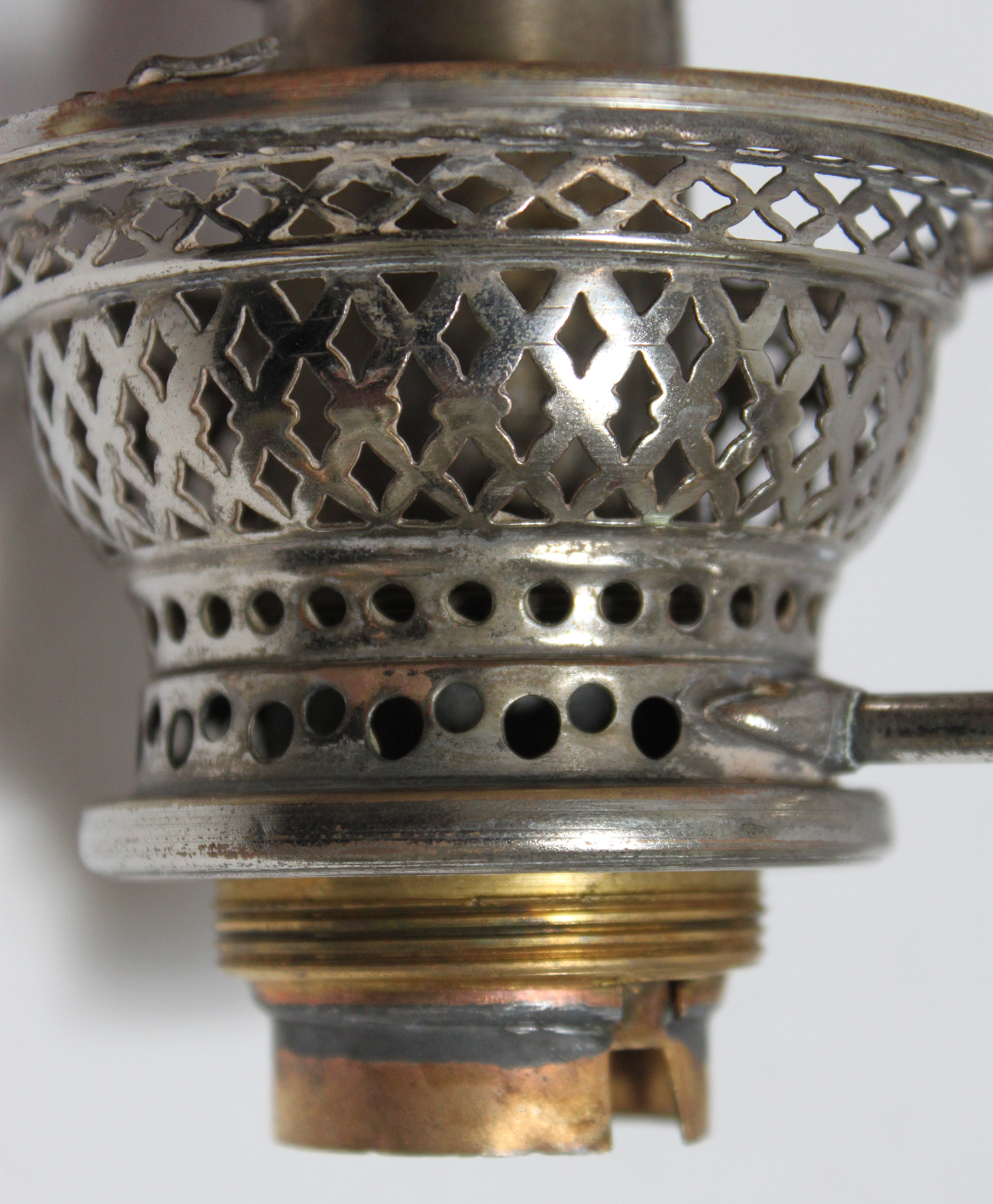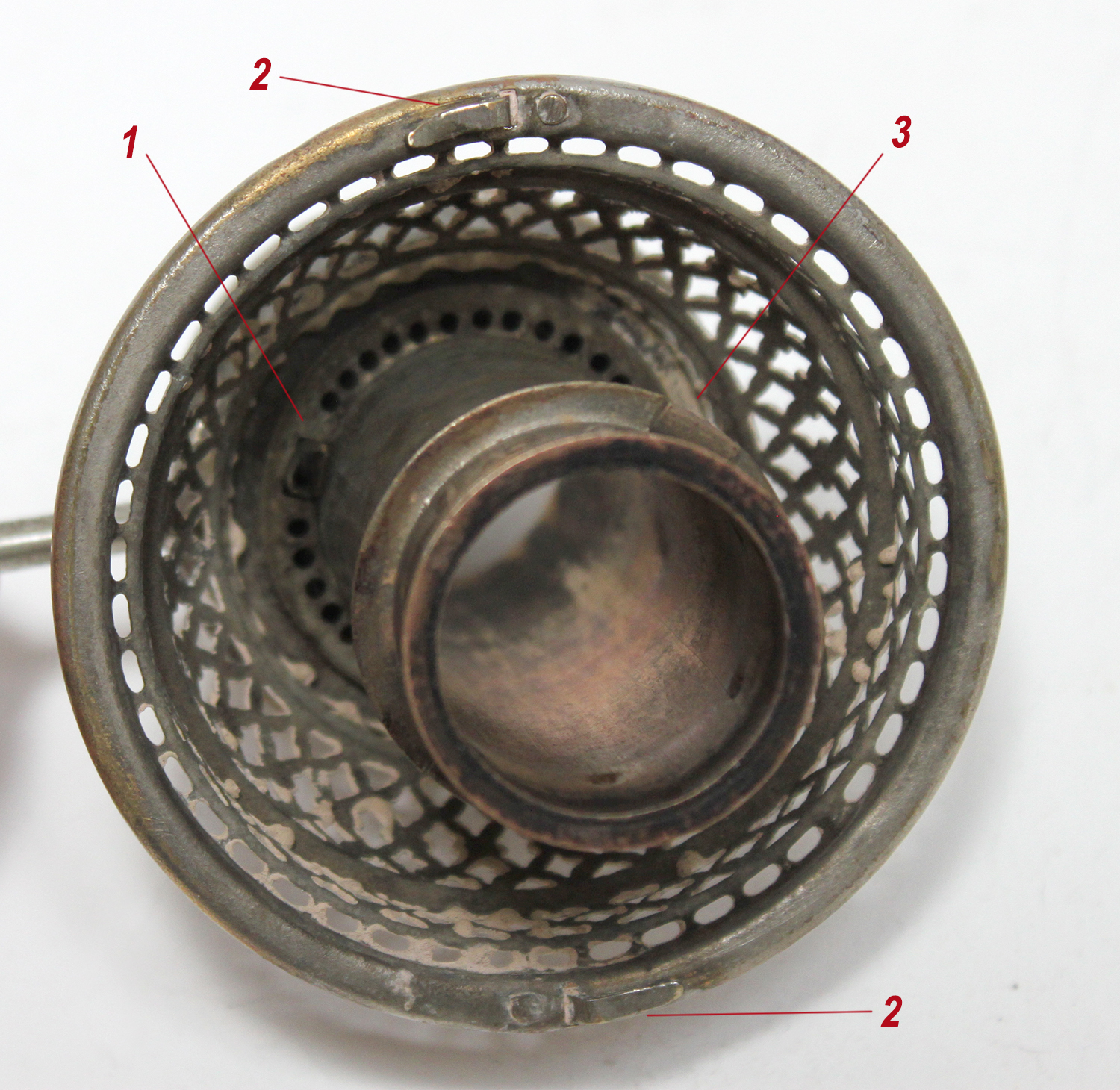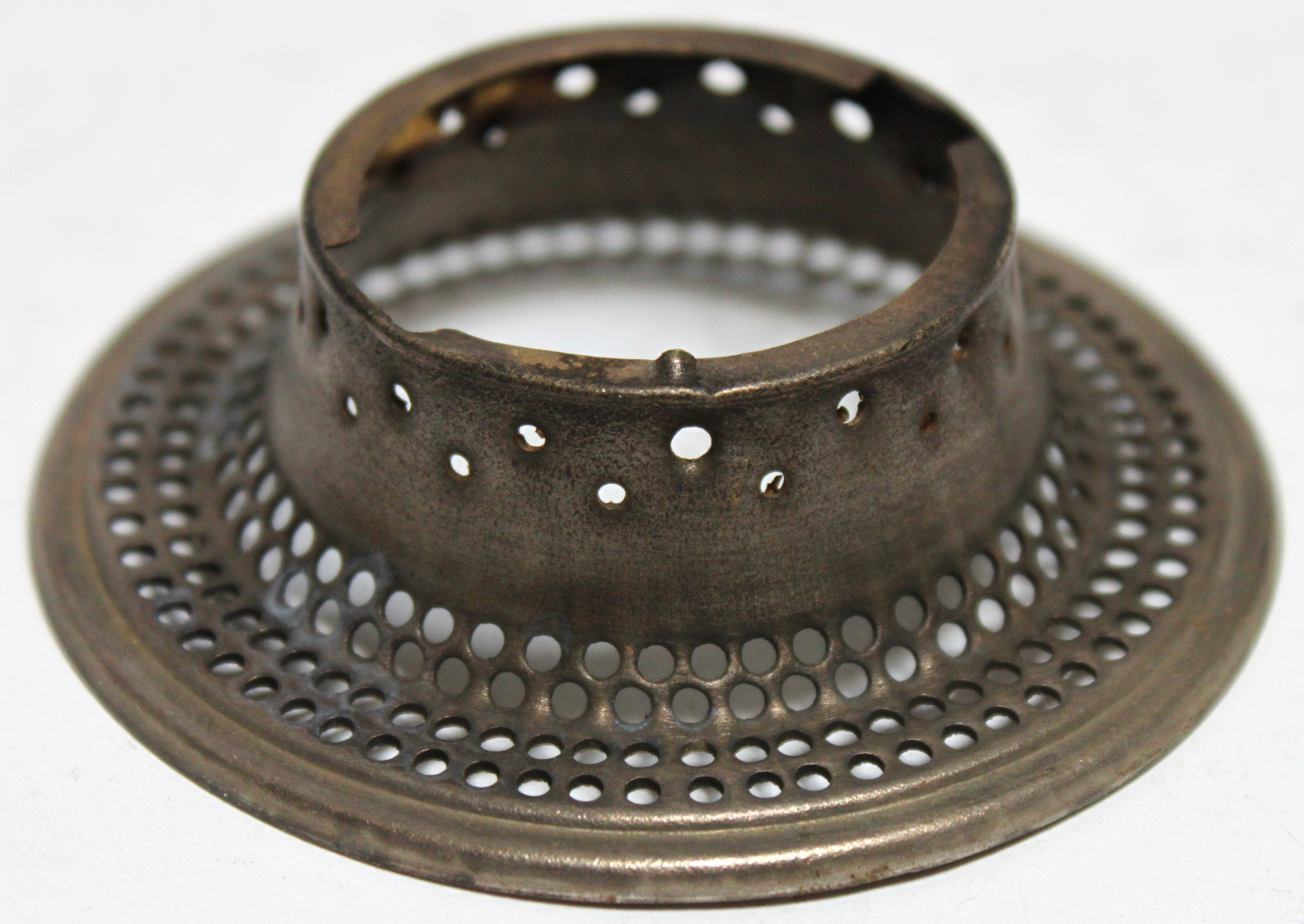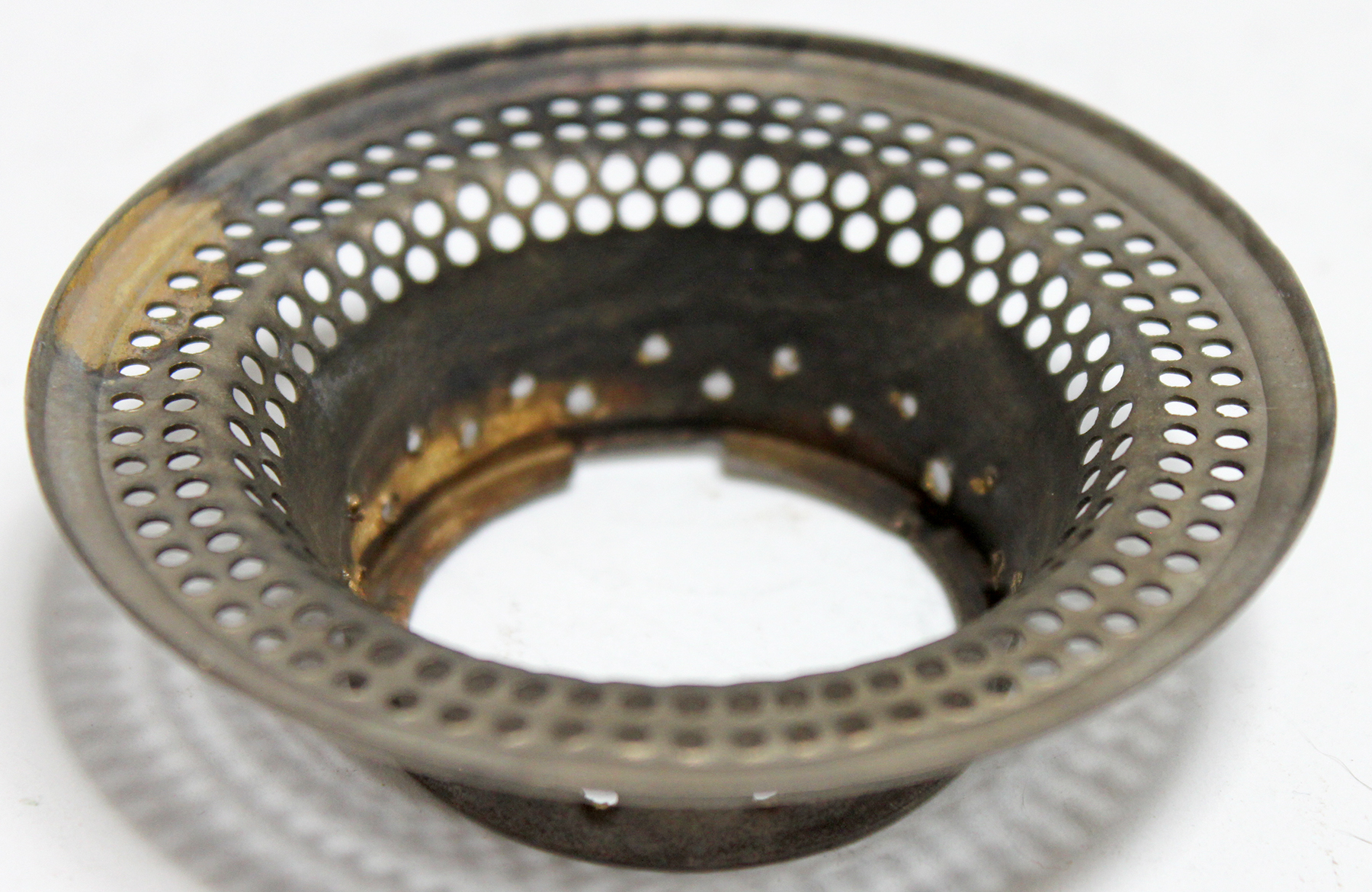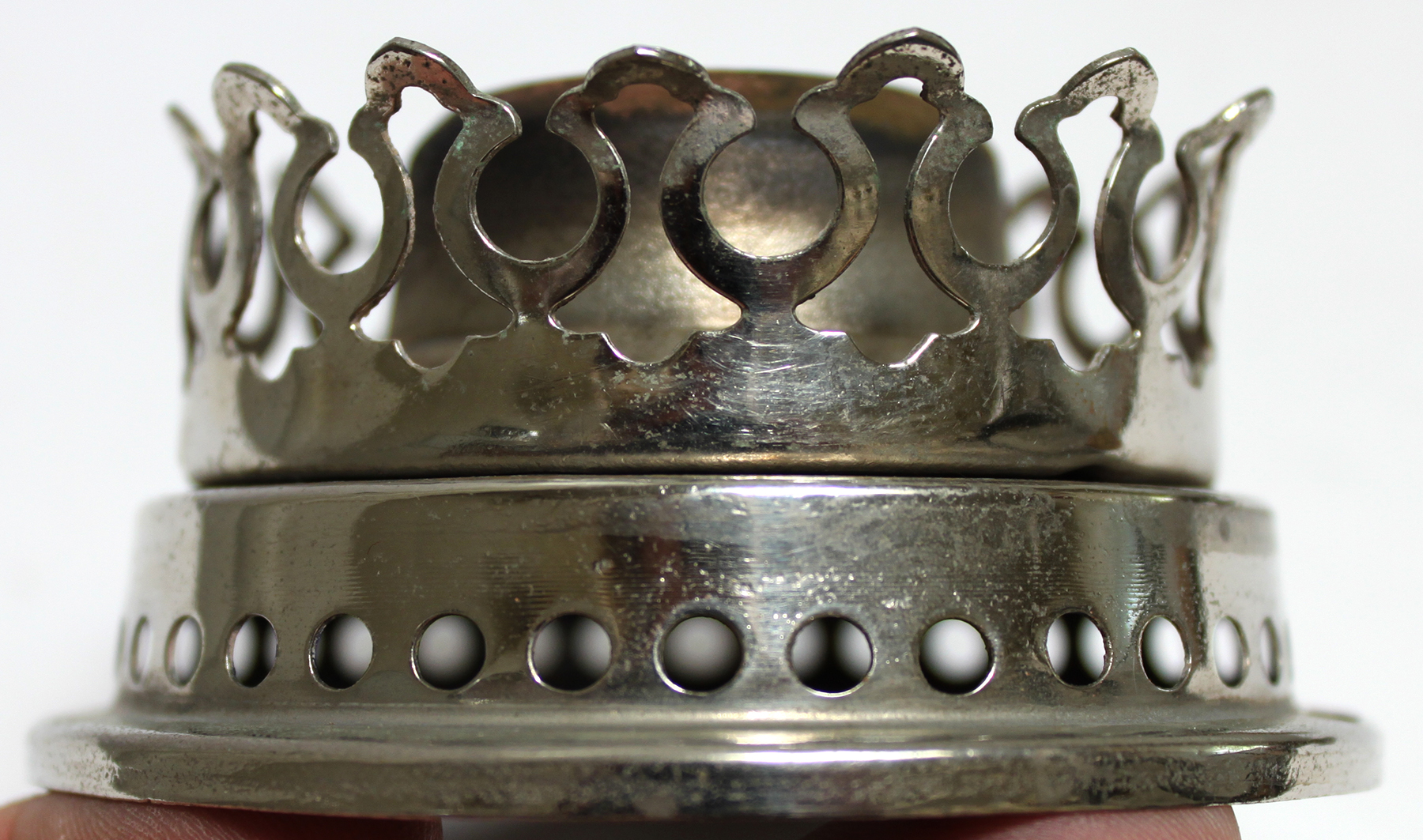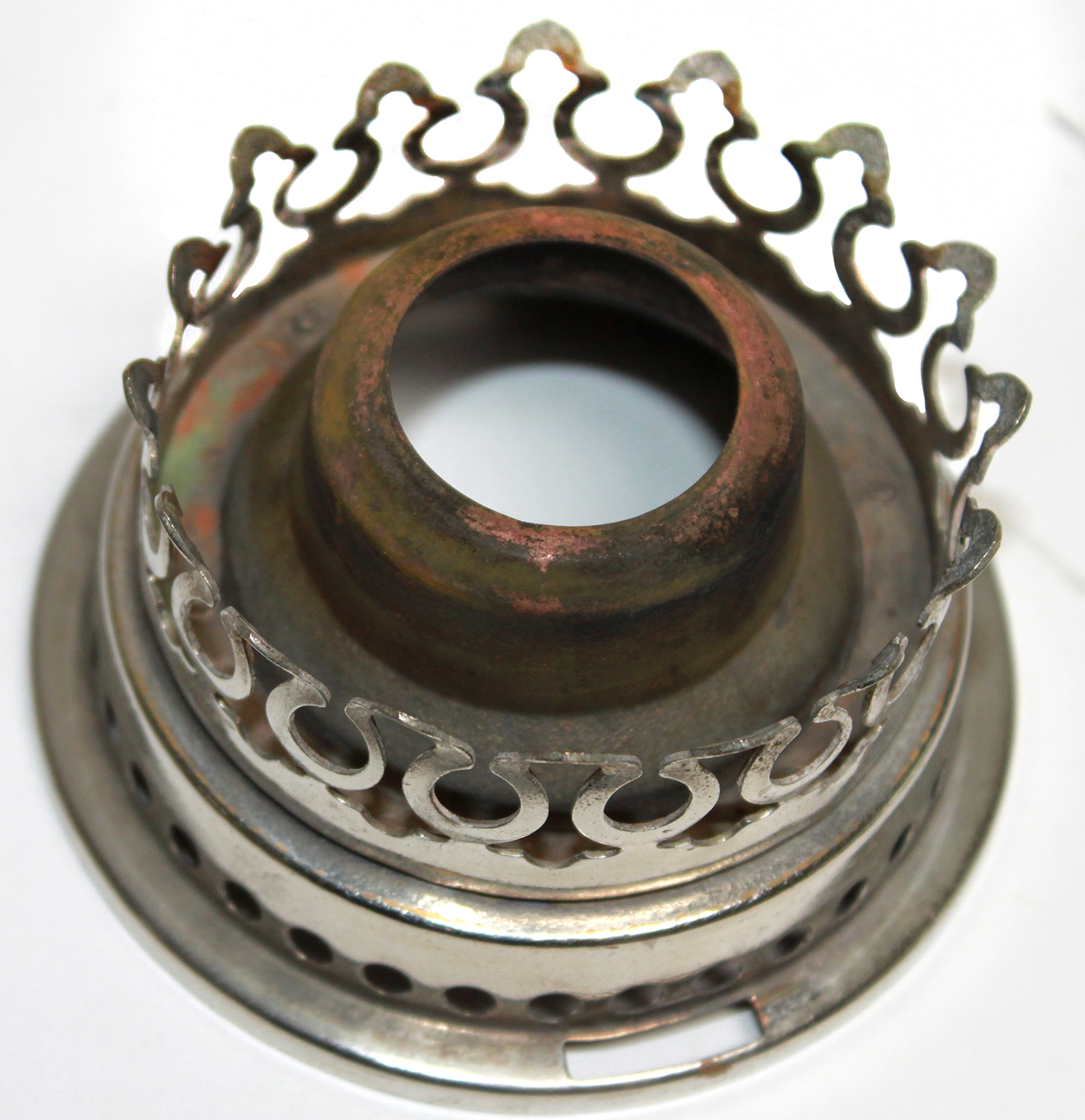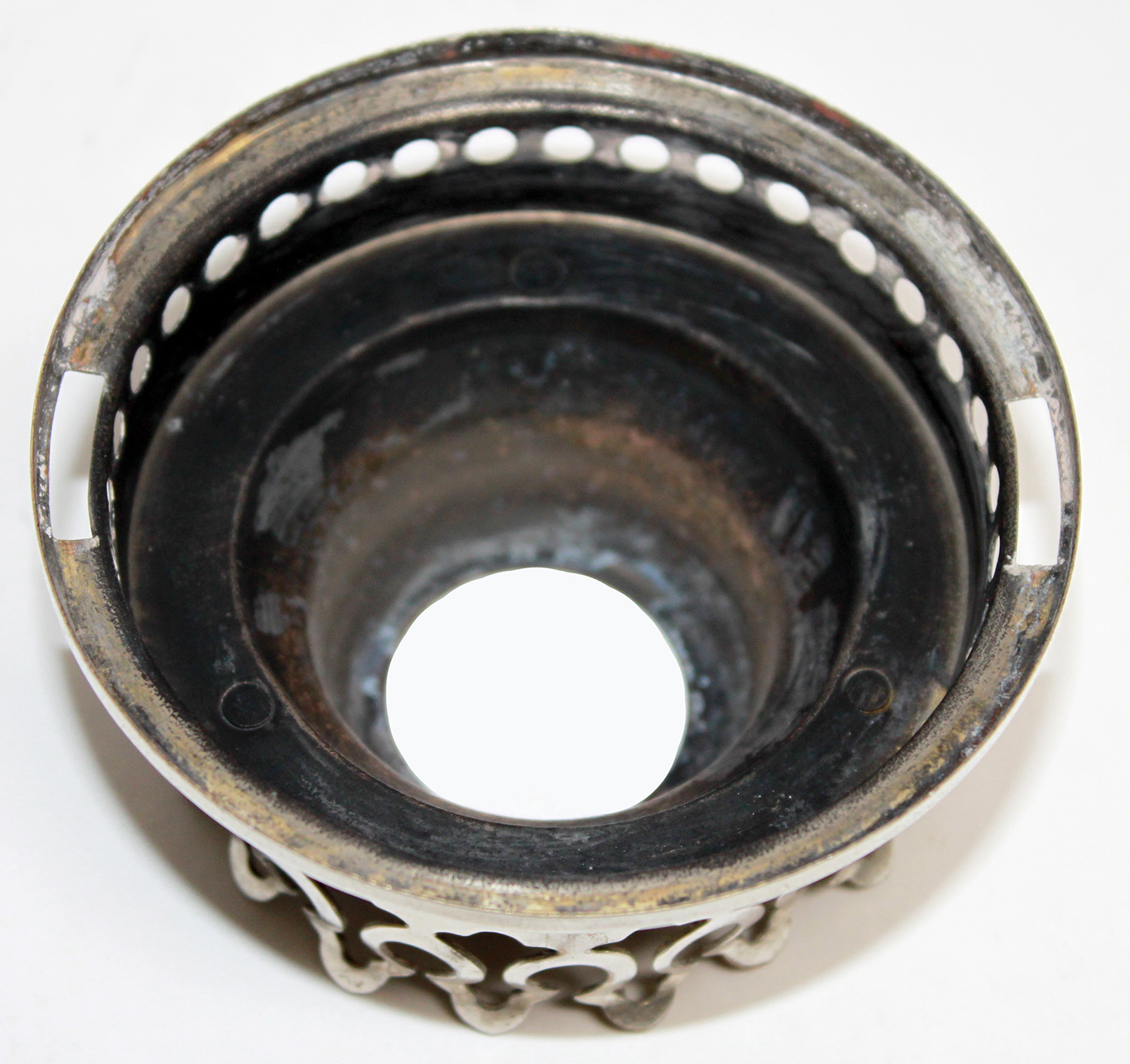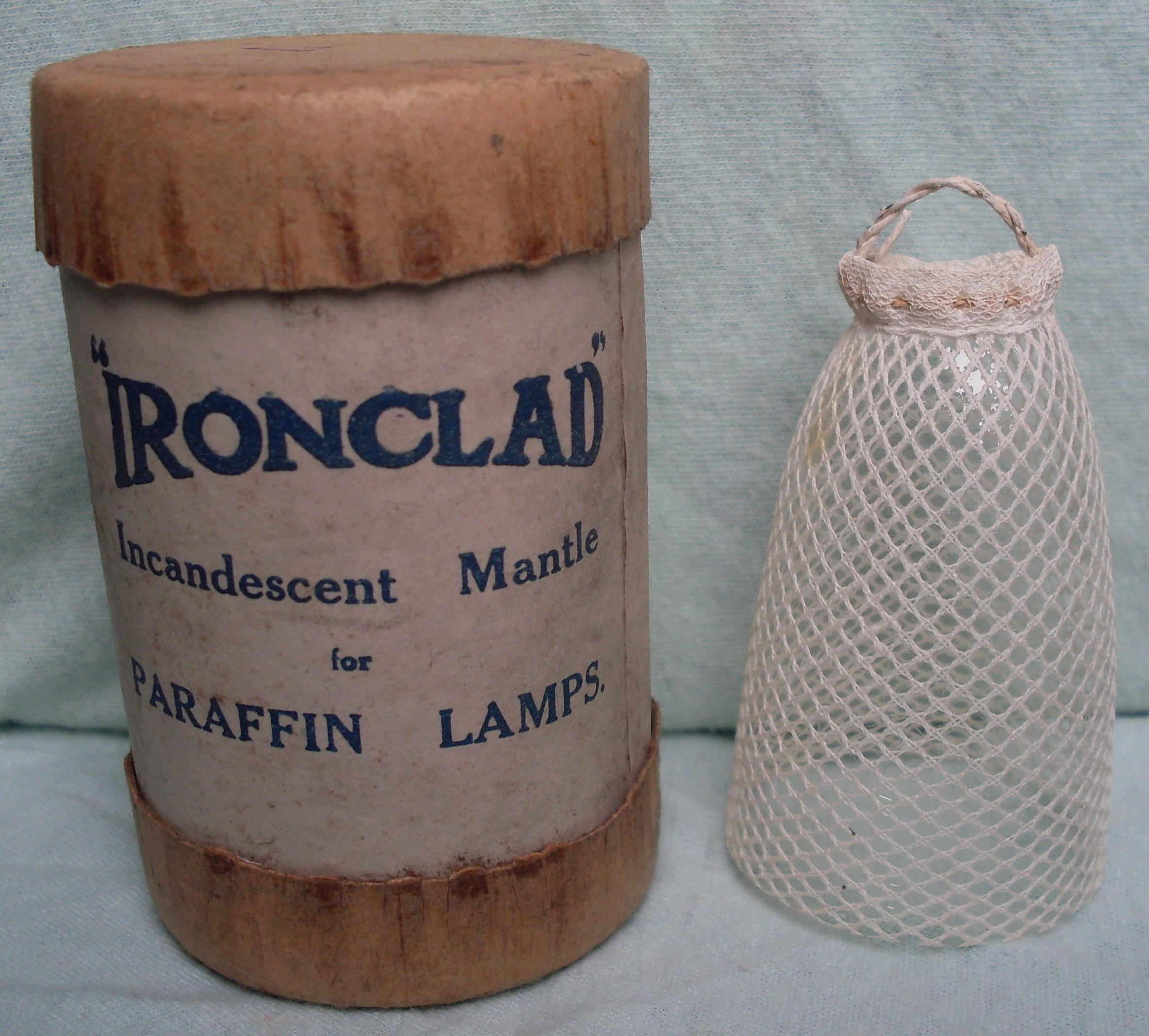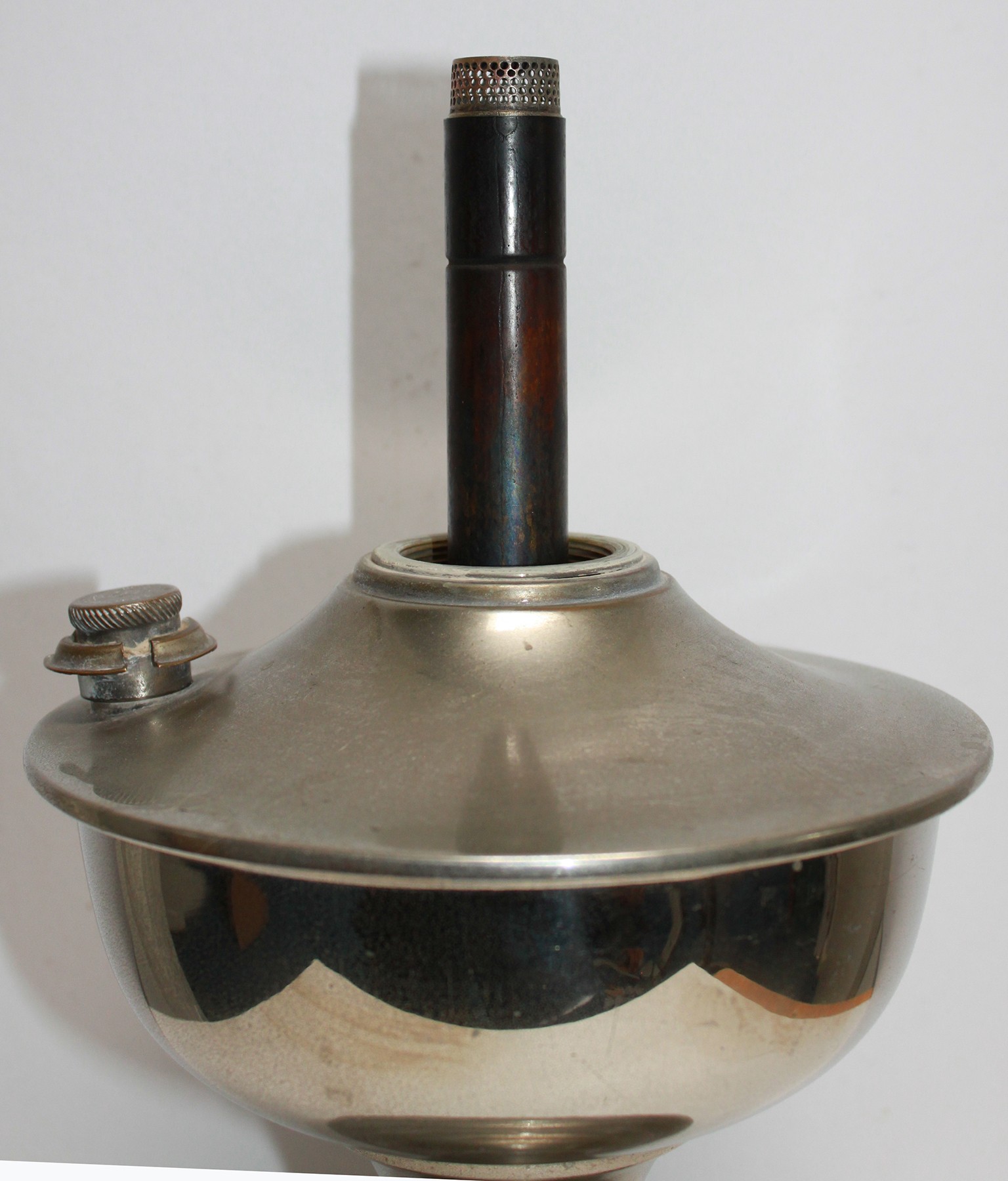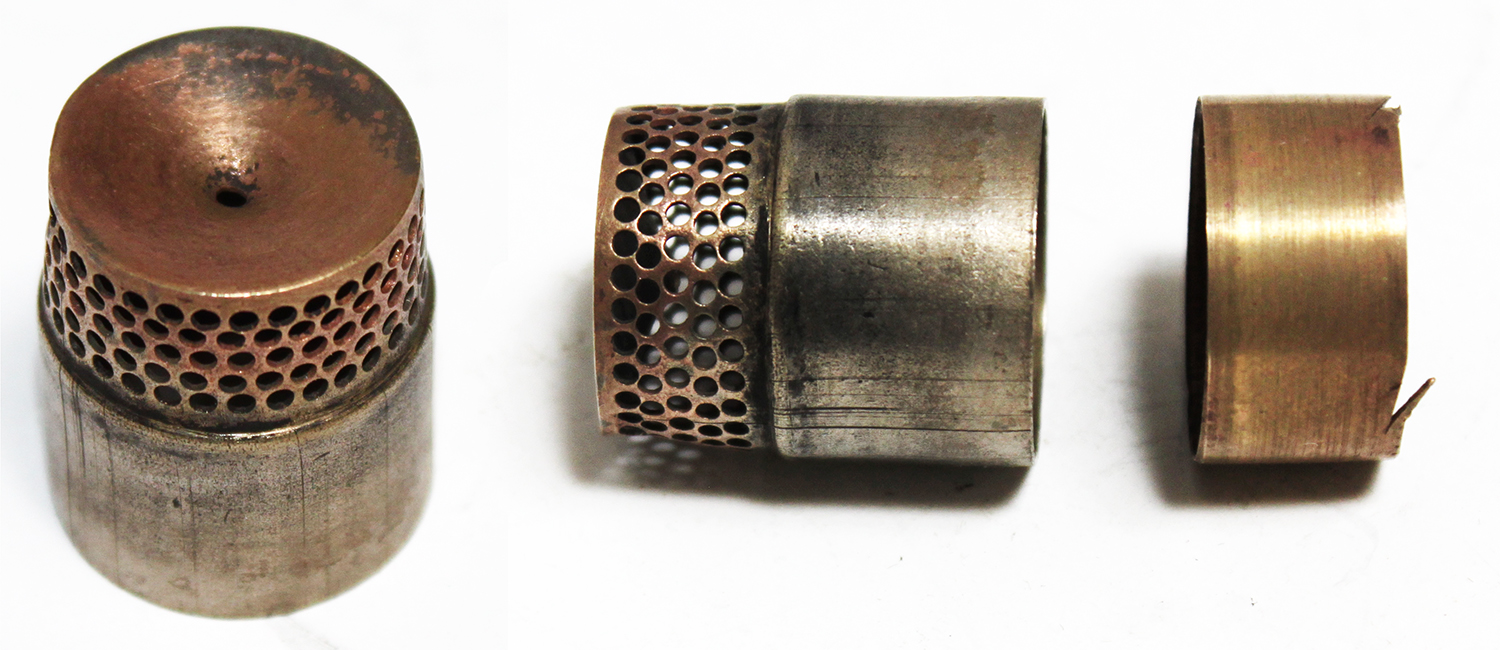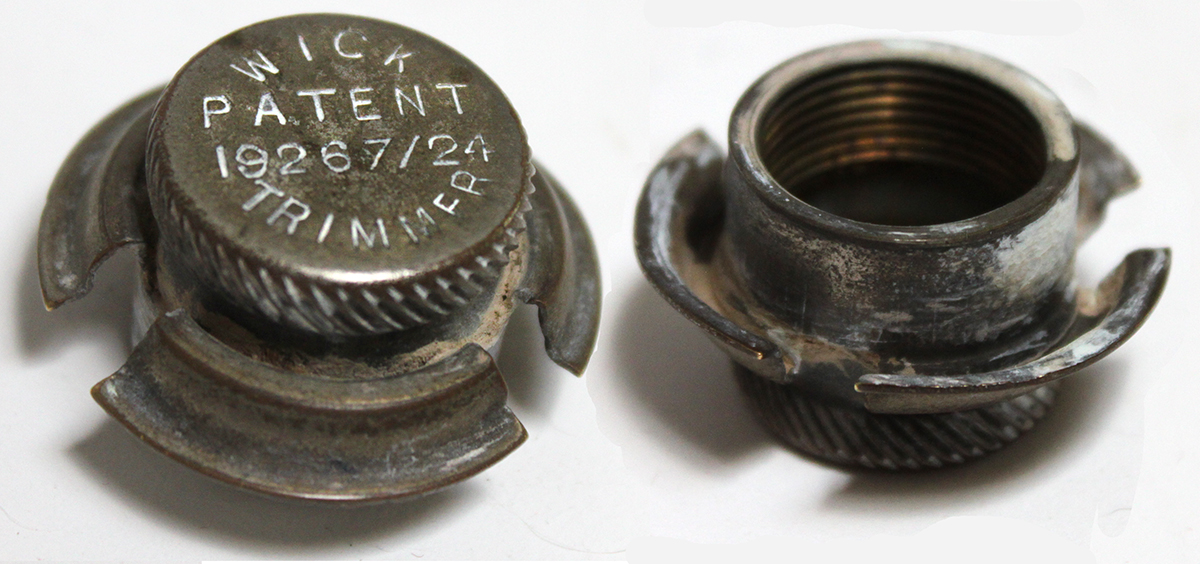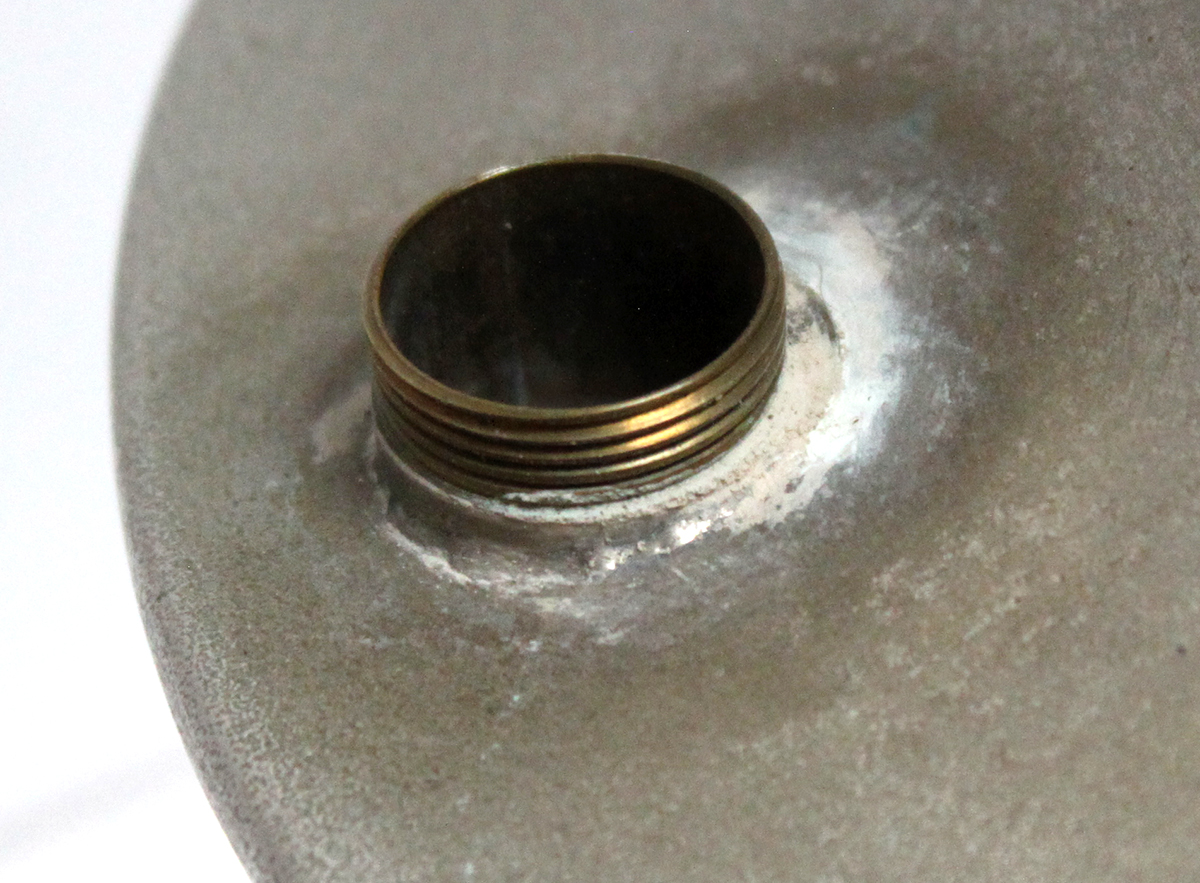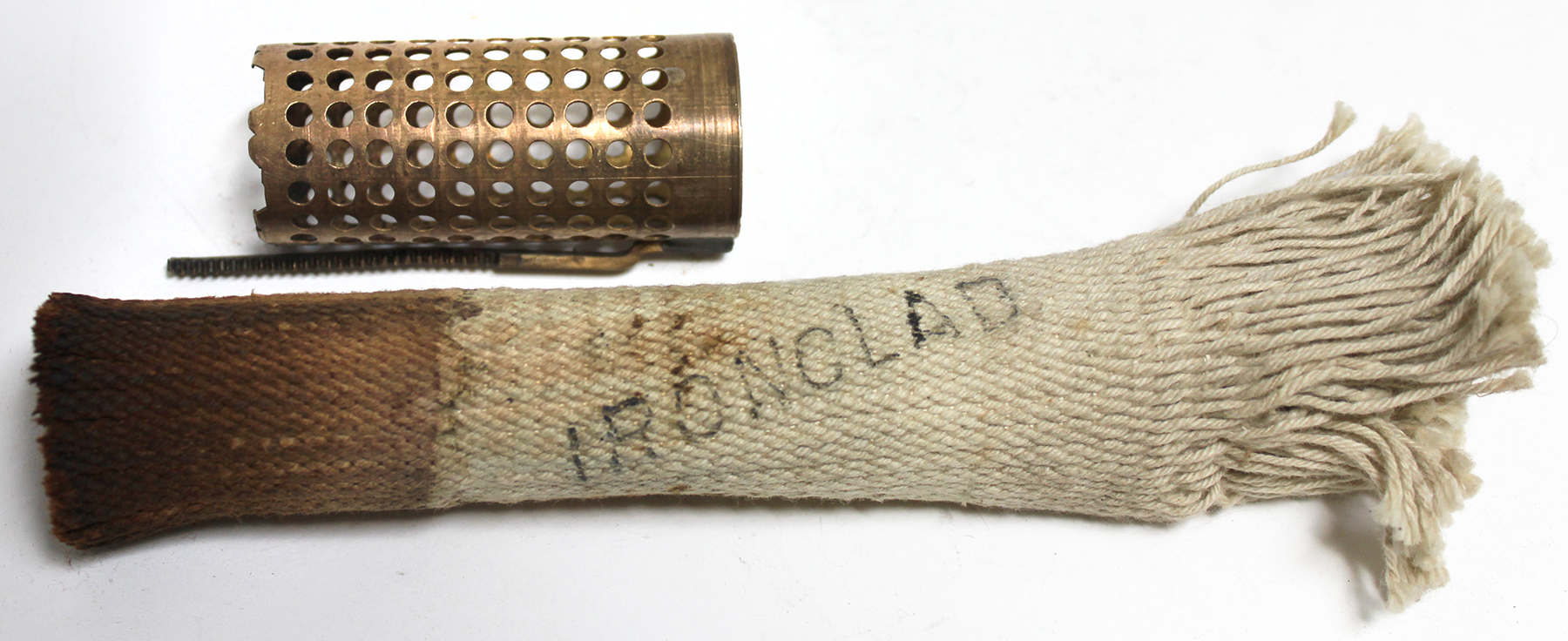![]()
![]() Aladdin home pages > Other brands home page > Ironclad model 2 mantle lamp
Aladdin home pages > Other brands home page > Ironclad model 2 mantle lamp

Ironclad burner with gallery removed
Removing the gallery revels a lot of information about the construction of the burner. The diameter step down of the flame spreader is located at the top edge of the centre draft tube. You can see that the top and middle flanges are attached to the outer wick tubes with punched dimples. The lower flange has tabs that lock the air distributor into place by twisting the air distributor. The top two rows of air holes on the air distributor are punched and not drilled or stamped. It is possible that the company that manufactured the parts delivered the air distributor without the top rows of holes and they were punched through at the Sherwood factory. You also can see one of the tabs that lock the gallery into place is attached to the burner basket with a small rivet. If you look closely at the right side edge of the air distributer you can see a couple of the slot holes ringing the underside of the basket top flange. These holes allow a small airflow along the outer edge of the air distributor.
Ironclad mantle lamp wick and wick holderThe Ironclad wick is an unreinforced tube stamped "IRONCLAD". The brass holder is similar to the Aladdin model 6 wick holder and can be confused at first glance. The wick holder is 1.06 inches dia, 2.68 inches long..
|
|||||||||||||||||||||||||
| If you would like to discuss any of the contents please feel free to . © 2002, 2006 by TeriAnn
Wakeman. All rights reserved Web
site design by Marigold
Ltd.
|
|||||||||||||||||||||||||
